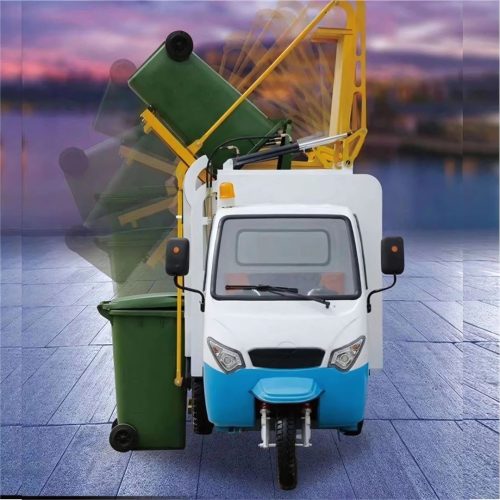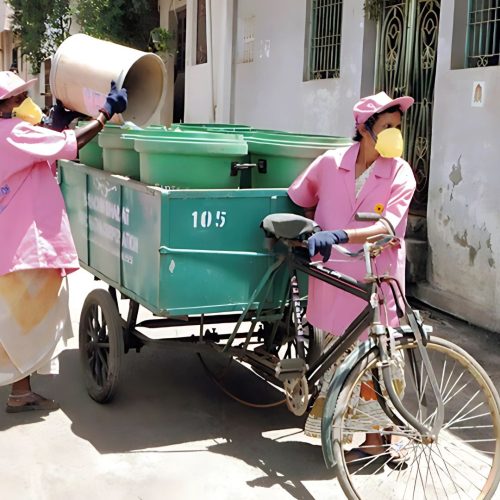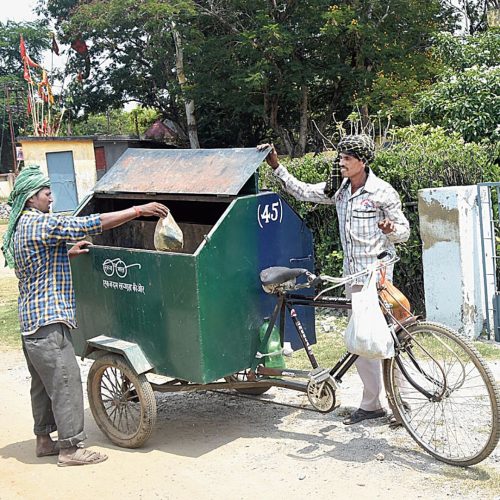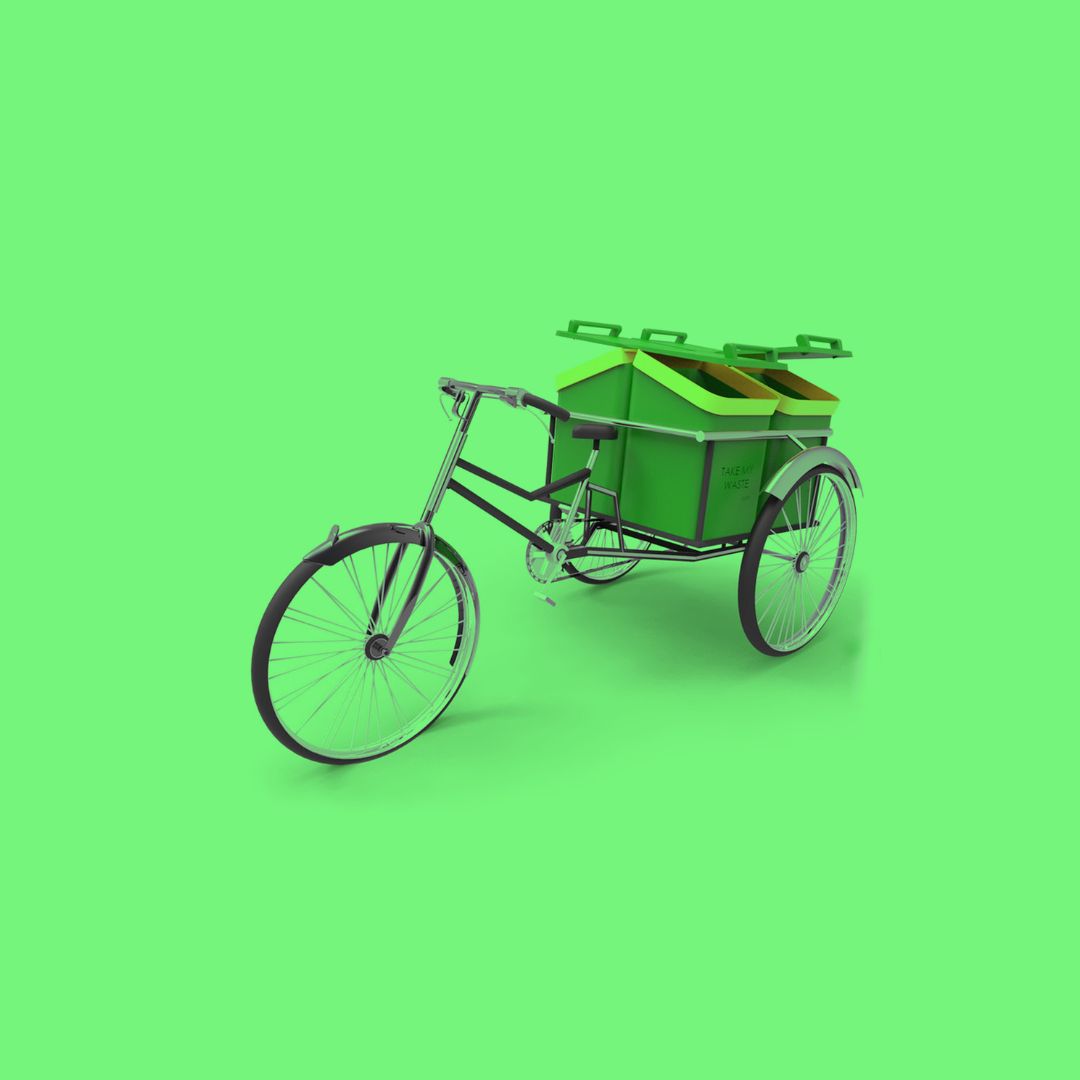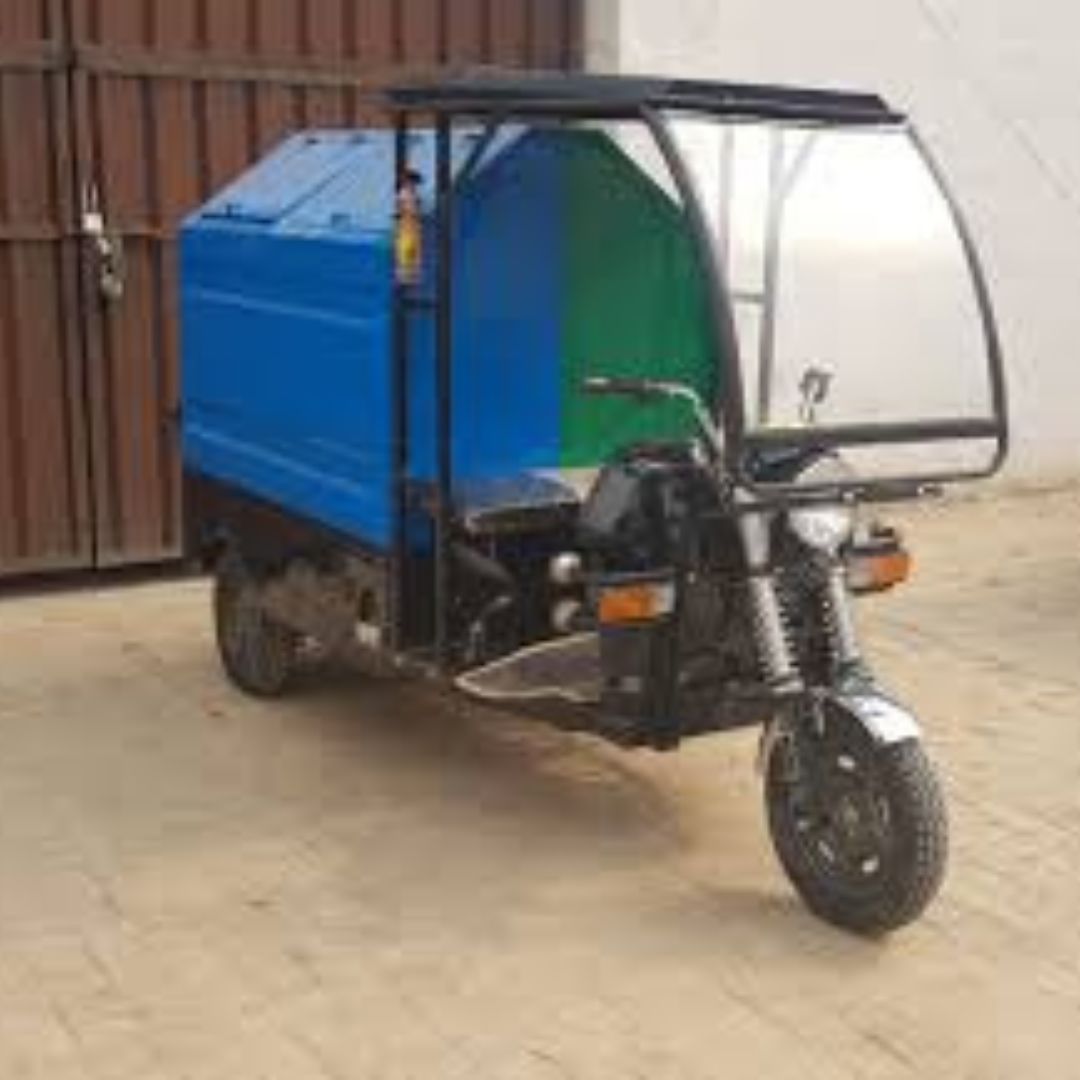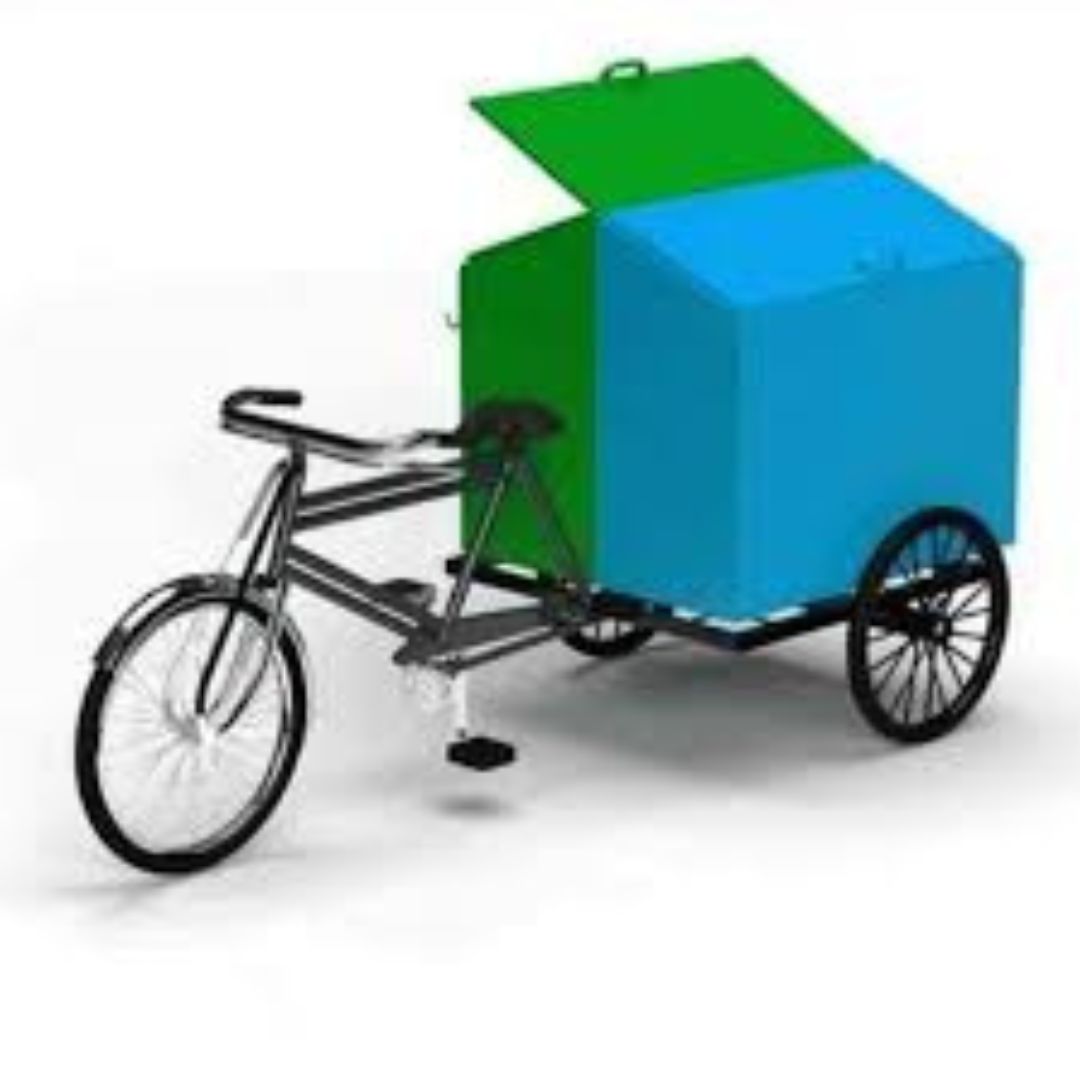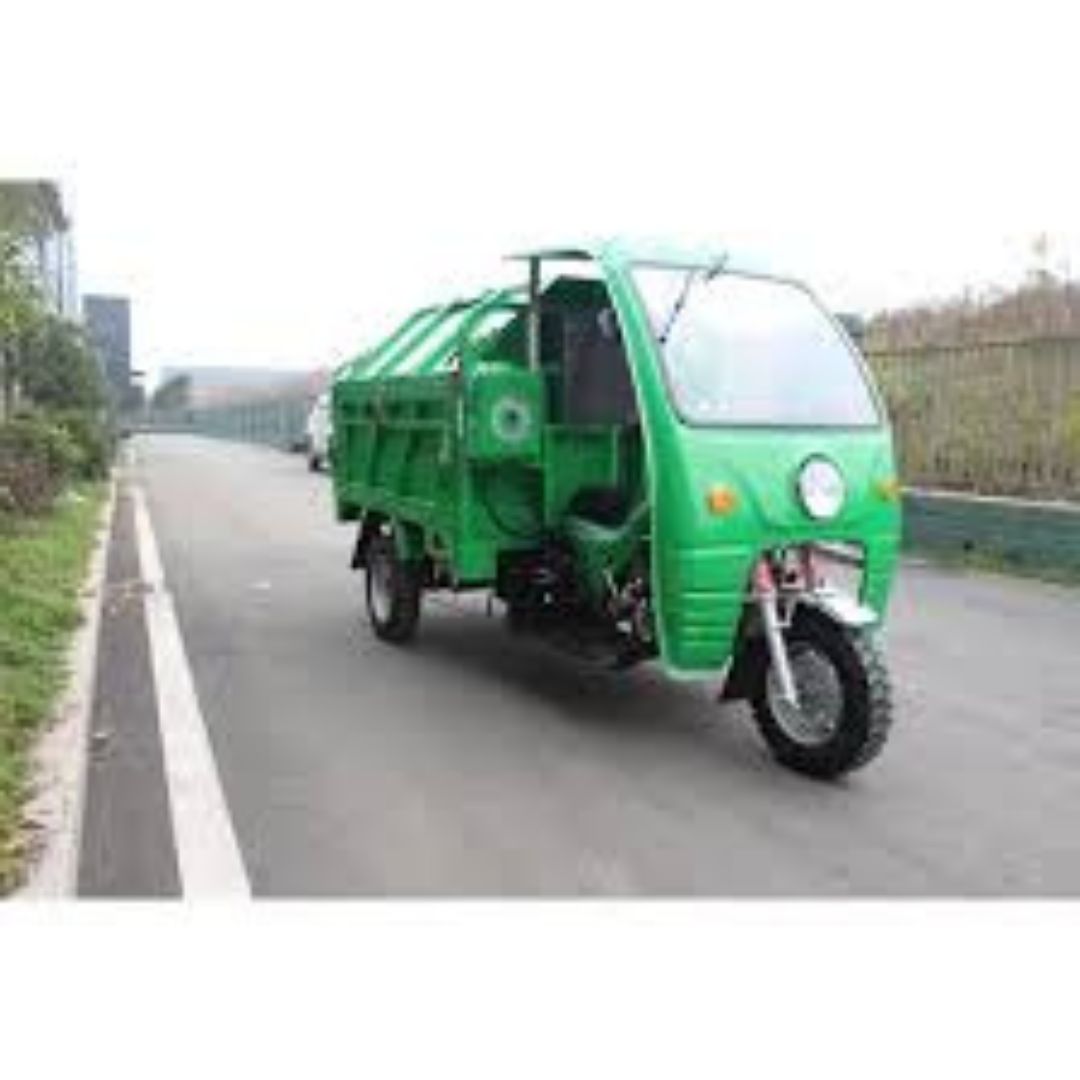Electric Waste Collection Tricycles
Electric Powered Units Waste Tricycles
ISI-certified electric waste collection tricycles designed for ULB sanitation, smart cities, and Swachh Bharat tenders. MNRE-approved, battery-powered units with durable galvanized bodies. Ideal for PWD, municipalities, and EPC contractors meeting BIS norms and solid waste management guidelines.
Electric Waste Collection Tricycle
Explore this Electric Waste Collection Tricycle featuring a 1500 W BLDC motor, 60 V battery, up to 100 km range, and 300‑500 kg payload. Ideal for zero‑emission municipal use, campus, hospital, or smart city applications. Energy-efficient, durable, and versatile—built to deliver reliable performance across industries.
Specifications – Electric Waste Long-Range Model
Parameter | Specification |
| Motor Power | 1500 W BLDC geared motor |
| System Voltage | 60 V |
| Battery Capacity | ~105–150 Ah, lead‑acid or Li‑ion |
| Range per Charge | 80–100 km |
| Maximum Speed | ~25 km/h |
| Payload Capacity | ~300–500 kg |
| Gross Vehicle Weight (GVW) | 750 kg – 1000 kg |
| Dimensions (L×W×H) | ~2790–3350 × 980–1360 × 1730–1830 mm |
| Ground Clearance | 125–195 mm |
| Gradeability | ~12–17 % |
| Turning Radius | ~1600–3100 mm |
| Chassis & Body | Mild steel tubular / sheet‑metal |
| Drive Configuration | L3N (low‑speed 3‑wheel goods carrier) |
| Emission | Zero tail‑pipe |
Use Cases Across Industries & Projects
Explore broad use cases for Electric Waste Collection Tricycles—from municipal zero‑emission waste collection and infrastructure services to industrial campuses and public event cleanup. Designed to meet government procurement and institutional needs, this product enables sustainable operations and efficient solid waste handling across sectors.
Municipal & Government
- Door-to-door household waste collection in ULB zones
- Back‑lane sanitation in smart city deployments
- Segregated wet/dry/hazardous waste transport
- Transfer between ward bins and secondary dumping points (MRFs)
- Integration into scalable public‑sector fleet routes
Commercial & Industrial
- Campus cleanup on industrial or educational estates
- Hospital and healthcare facility waste logistics
- Construction‑site daily debris collection
- Corporate park or institutional grounds maintenance
- Event venue post‑event solid waste clearance
Special Use Case
- E‑waste cart collection for electronics recycling drives
- Haritha Karma Sena community waste pickup support
- Temporary waste handling during public festivals or fairs
- Narrow‑alley access in dense residential areas
- Cluster‑based NGO or CSR‑funded sanitation programs
Use Cases Across Industries & Projects
Comprehensive installation, maintenance, service, and warranty guidance help procurement teams and engineers plan deployment, secure long-term reliability, and ensure operational continuity for Electric Waste Collection Tricycles.
Installation Guide
- Step‑by‑step chassis assembly and system check
- Battery connection and charging station setup
- Motor and controller integration with wiring norms
- Brake system alignment and steering calibration
- Pre‑delivery safety and test‑ride checklist
Maintenance & Services
- Regular battery fluid check or Li‑ion diagnostics
- Motor, gearbox lubrication and seal inspection
- Brake lever and brake‑cut cut‑off switch testing
- Chassis bolt‑tightening, anti‑rust treatment, and cleaning
- Authorized service center scheduling and diagnostics
Warranty & Assurance
- Manufacturer warranty terms and duration
- Extended service‑contract options available
- Spare parts availability and lead times
- Onsite support and annual preventive maintenance
- Safety and compliance (charging voltage, load ratings) documentation
Snapshots to Success – Designs, Installations & Innovation
High-resolution imagery, schematics, and real-world use‑case visuals offer a clear view of form, payload capacity, and operational workflow—helping institutional buyers assess size, fit, and functionality before procurement decisions.
FAQs – What Customers Ask Most !
Find expert answers to common questions about Electric Waste Collection Tricycles, covering performance, range, payload, maintenance, compliance, and suitability across government and institutional operations.
What is the range per charge of Electric Waste Collection Tricycles?
Typical range is 80–100 km per full charge, depending on payload and terrain.
What payload capacity does the Electric Waste Collection Tricycles support?
It supports 300–500 kg of solid waste per trip, suited for municipal and institutional needs.
Is the Electric Waste Collection Tricycles compliant with government standards?
Yes – designed to meet MNRE guidelines and BIS/ISI norms for municipal procurement.
How long does the battery charging take for Electric Waste Collection Tricycles?
Charging completes in 6–8 hours using standard 60 V chargers; fast‑charging options are available.
What type of motor and efficiency ratings are used in the Electric Waste Collection Tricycles?
It uses a brushless DC (BLDC) geared motor around 1,500 W, offering high efficiency and low maintenance.
How is maintenance handled for Electric Waste Collection Tricycles?
Regular lubrication, brake checks, battery service, and annual inspections by authorized centers ensure uptime.
Can Electric Waste Collection Tricycles operate on narrow roads and alleys?
Yes – designed with compact turning radius (~1.6–2.5 m) for dense urban lanes and back‑lanes.
Are spare parts and service support available across regions?
Verified network of dealers and service centers provide parts and support nationwide under warranty.
What is the expected operational lifespan of Electric Waste Collection Tricycles?
With proper maintenance, lifespan ranges from 5 to 7 years, depending on usage and load cycles.
How does Electric Waste Collection Tricycles help reduce operational costs?
Energy-efficient EV design reduces fuel cost to under ₹1/km and lowers maintenance expenses versus diesel vehicles.
Related Products
Discover related products that complement your needs – durable, efficient, and affordable solutions for lighting, solar, and infrastructure projects.
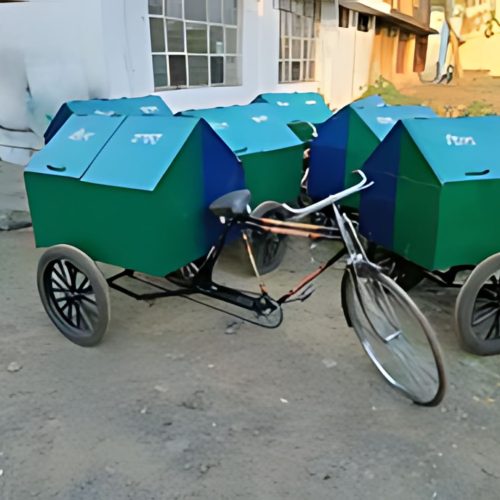
E-Rickshaw Mounted Waste Bins
Compact, eco-friendly, mobile, durable, lightweight, cost-effective, ergonomic, weatherproof, versatile, customizable, easy-to-clean, and rust-resistant.

